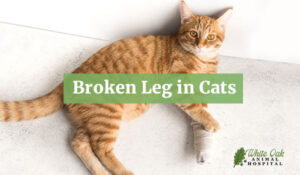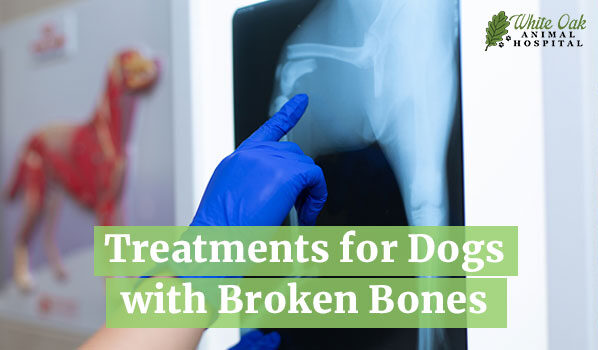 Dogs with broken bones face significant challenges that require prompt and effective treatment. Ensuring that these injuries are addressed quickly is crucial for preventing complications and ensuring a swift recovery. When fractures are not treated properly, they can lead to long-term issues such as improper bone healing or chronic pain. Understanding the available treatment options is essential for any dog owner, as this knowledge can make a significant difference in your dog’s recovery.
Dogs with broken bones face significant challenges that require prompt and effective treatment. Ensuring that these injuries are addressed quickly is crucial for preventing complications and ensuring a swift recovery. When fractures are not treated properly, they can lead to long-term issues such as improper bone healing or chronic pain. Understanding the available treatment options is essential for any dog owner, as this knowledge can make a significant difference in your dog’s recovery.
Identifying Broken Bones in Dogs: Symptoms and Diagnosis
Recognizing the Signs of Broken Bones
 Recognizing the signs of broken bones in dogs is the first step in providing effective care. Dogs with broken bones often exhibit clear symptoms such as limping, swelling, or visible deformities. These signs indicate that immediate attention is needed. Additionally, behavioral changes, such as reluctance to move or unusual aggression due to pain, are critical indicators that a dog may have a broken bone. Monitoring your dog closely for these symptoms can help you act quickly.
Recognizing the signs of broken bones in dogs is the first step in providing effective care. Dogs with broken bones often exhibit clear symptoms such as limping, swelling, or visible deformities. These signs indicate that immediate attention is needed. Additionally, behavioral changes, such as reluctance to move or unusual aggression due to pain, are critical indicators that a dog may have a broken bone. Monitoring your dog closely for these symptoms can help you act quickly.
Veterinary Diagnosis
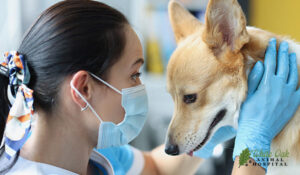 Veterinary diagnosis is essential for confirming the presence of broken bones in dogs. X-rays and physical examinations are the primary tools veterinarians use to diagnose fractures. These diagnostic methods allow for a precise understanding of the injury, which is crucial for determining the most effective treatment plan. Early detection and accurate diagnosis are vital for ensuring that dogs with broken bones receive the care they need to recover fully.
Veterinary diagnosis is essential for confirming the presence of broken bones in dogs. X-rays and physical examinations are the primary tools veterinarians use to diagnose fractures. These diagnostic methods allow for a precise understanding of the injury, which is crucial for determining the most effective treatment plan. Early detection and accurate diagnosis are vital for ensuring that dogs with broken bones receive the care they need to recover fully.
Treatment Option 1: Immobilization and Casting for Dogs with Broken Bones
When Immobilization is Appropriate
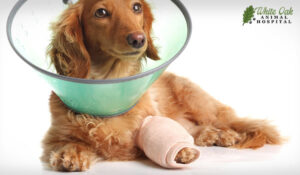 Immobilization and casting are often the first treatment options considered for dogs with broken bones. This method is particularly effective for fractures that are stable and do not require surgical intervention. Immobilization helps to stabilize the bone, reduce pain, and promote healing by preventing the injured limb from moving. This approach is most suitable for less severe fractures where the bones are well-aligned.
Immobilization and casting are often the first treatment options considered for dogs with broken bones. This method is particularly effective for fractures that are stable and do not require surgical intervention. Immobilization helps to stabilize the bone, reduce pain, and promote healing by preventing the injured limb from moving. This approach is most suitable for less severe fractures where the bones are well-aligned.
The Process of Casting and Splinting
The process of applying a cast or splint to a dog’s broken bone is straightforward but must be done by a veterinary professional. The injured area is first assessed and aligned correctly. Then, the veterinarian applies a cast or splint to immobilize the limb, ensuring that the bone remains in the proper position during the healing process. Regular check-ups are essential to monitor the progress and adjust the cast if necessary.
Aftercare for Dogs with Casts
Aftercare is crucial for dogs with broken bones that have been immobilized with a cast. Ensuring that the dog remains comfortable and that the cast stays dry and intact is vital. Owners should monitor the cast regularly for signs of wear or infection, such as sores or swelling around the edges. If any issues arise, it’s important to consult the veterinarian immediately to prevent complications.
Treatment Option 2: Surgical Intervention for Dogs with Broken Bones
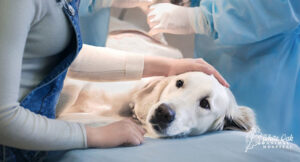 When Surgery is Necessary
When Surgery is Necessary
Surgical intervention is often necessary for dogs with broken bones when the fractures are complex or cannot be stabilized through casting alone. Surgery is usually recommended for fractures that involve multiple bone fragments, are displaced, or occur in areas that are difficult to immobilize with a cast. Surgical intervention provides the stability needed for proper healing, especially in severe cases.
Types of Surgical Procedures
Several surgical procedures are available for treating dogs with broken bones, depending on the location and severity of the fracture. Common methods include pinning, plating, and external fixation. Pinning involves inserting metal pins to hold the bone fragments together while plating uses metal plates and screws to secure the bone. External fixation involves placing a frame outside the body to stabilize the bone. Each procedure has its specific applications and benefits, and the choice depends on the individual case.
Post-Surgery Care and Recovery
Post-surgery care is critical for ensuring a successful recovery for dogs with broken bones. This includes managing pain, preventing infection, and monitoring the healing process closely. Owners must follow the veterinarian’s instructions regarding wound care, activity restrictions, and follow-up appointments. Proper post-surgery care significantly increases the chances of a full recovery and reduces the risk of complications.
Treatment Option 3: Pain Management for Dogs with Broken Bones
Importance of Pain Management
Pain management is a fundamental aspect of treating dogs with broken bones. Controlling pain not only improves the dog’s comfort but also aids in the healing process. Effective pain management reduces stress and allows the dog to rest and recover more effectively. It’s essential to address pain promptly to enhance the overall quality of life during recovery.
Medications and Alternatives
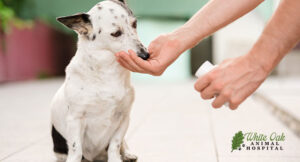 Several pain management options are available for dogs with broken bones, including medications and alternative therapies. Commonly prescribed pain medications include non-steroidal anti-inflammatory drugs (NSAIDs) and opioids, which help to reduce pain and inflammation. Additionally, alternative therapies like acupuncture and cold laser therapy can be used to complement traditional pain management strategies. These alternatives may offer additional relief and support the healing process.
Several pain management options are available for dogs with broken bones, including medications and alternative therapies. Commonly prescribed pain medications include non-steroidal anti-inflammatory drugs (NSAIDs) and opioids, which help to reduce pain and inflammation. Additionally, alternative therapies like acupuncture and cold laser therapy can be used to complement traditional pain management strategies. These alternatives may offer additional relief and support the healing process.
Monitoring and Adjusting Pain Management
Monitoring your dog’s response to pain management is crucial for ensuring their comfort and recovery. It’s important to observe any changes in behavior or signs of discomfort and report them to the veterinarian. Adjustments to the pain management plan may be necessary to address any ongoing issues or to reduce the risk of side effects from medications. Regular communication with your veterinarian is key to maintaining effective pain control.
Treatment Option 4: Physical Therapy and Rehabilitation for Dogs with Broken Bones
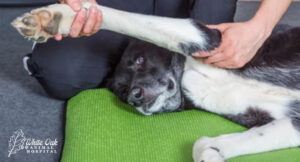 The Role of Physical Therapy in Recovery
The Role of Physical Therapy in Recovery
Physical therapy plays a vital role in the recovery process for dogs with broken bones. It helps to restore strength, flexibility, and mobility to the injured limb, ensuring that the dog can return to normal activity levels. Starting physical therapy at the appropriate time during recovery is essential for maximizing the benefits and preventing further injury.
Types of Rehabilitation Exercises
Several rehabilitation exercises are beneficial for dogs recovering from broken bones, including hydrotherapy and controlled walking. Hydrotherapy involves water-based exercises that reduce stress on the injured limb while promoting movement and muscle strengthening. Controlled walking, under the guidance of a professional, helps to gradually reintroduce weight-bearing activities and improve coordination. These exercises should be tailored to the individual dog’s needs and progress.
Tips for Safe Rehabilitation
Ensuring that rehabilitation exercises are performed safely is crucial for dogs with broken bones. It’s important to follow professional advice and avoid pushing the dog beyond its comfort level. Rehabilitation should be done gradually and with careful monitoring to prevent setbacks. Owners should work closely with their veterinarian or a certified canine rehabilitation therapist to create a customized plan that supports the dog’s recovery.
Treatment Option 5: Nutritional Support for Dogs with Broken Bones
Nutritional Needs During Recovery
Nutritional support is a critical component of the recovery process for dogs with broken bones. Proper nutrition helps to promote bone healing and overall recovery. Dogs with broken bones may have increased nutritional needs, particularly for nutrients like calcium, protein, and vitamins that support bone health. Ensuring that the dog’s diet is well-balanced and nutrient-rich is essential for a swift recovery.
Supplementation and Diet Adjustments
In addition to a balanced diet, specific treats and supplements can be beneficial for dogs with broken bones. Supplements such as glucosamine, chondroitin, and Eastern Herbs, like in PET | TAO Harmonize Joint, support joint health and reduce inflammation, aiding in the recovery process. Additionally, kidney helps your dog’s bones heal from an Eastern Medicine perspective. In Food Therapy (one of the branches of Traditional Chinese Veterinary Medicine) kidney governs bone. And, Dr. Damron’s pet food company, PET | TAO, makes freeze dried kidney treats! Adjusting the dog’s diet to include these supplements, along with ensuring adequate intake of calcium and other essential nutrients, can significantly enhance healing. It’s important to consult with a veterinarian before making any dietary changes or adding supplements to ensure they are appropriate for your dog’s needs.
 Ensuring a swift recovery for dogs with broken bones requires a comprehensive treatment approach that addresses every aspect of healing. For pet owners seeking the best care for their dogs, White Oak Animal Hospital offers integrative treatment options that are not available elsewhere. With over 28 years of experience, White Oak Animal Hospital provides specialized services, including TCVM (Traditional Chinese Veterinary Medicine) Telemedicine consultations, which offer unique and holistic approaches to recovery.
Ensuring a swift recovery for dogs with broken bones requires a comprehensive treatment approach that addresses every aspect of healing. For pet owners seeking the best care for their dogs, White Oak Animal Hospital offers integrative treatment options that are not available elsewhere. With over 28 years of experience, White Oak Animal Hospital provides specialized services, including TCVM (Traditional Chinese Veterinary Medicine) Telemedicine consultations, which offer unique and holistic approaches to recovery.
This integration of traditional and modern veterinary practices ensures that each dog receives a tailored treatment plan designed for optimal healing. We encourage you to explore the comprehensive care options available at White Oak Animal Hospital to give your dog the best possible chance at a swift and full recovery. Regular follow-up appointments at White Oak are essential for monitoring progress and making necessary adjustments to the treatment plan, ensuring the best possible outcome for your beloved pets.
Frequently Asked Questions
How long does it take for a dog’s broken bone to heal?
The healing time for dogs with broken bones varies depending on the severity of the fracture and the treatment method used. Typically, it can take anywhere from 4 to 12 weeks for a bone to heal fully. The specific timeline depends on factors such as the dog’s age, overall health, and the location of the fracture. Following the veterinarian’s recommendations and ensuring proper care throughout the recovery period is key to a successful healing process.
Can dogs recover fully from a broken bone?
Yes, dogs can recover fully from a broken bone, especially with proper treatment and care. The prognosis for recovery depends on the type of fracture, the dog’s age and health, and the quality of post-treatment care. Most dogs regain full function of the affected limb, although some may require ongoing management for issues like arthritis that can develop as a result of the injury.
What should I do if my dog’s cast gets wet or damaged?
If your dog’s cast gets wet or damaged, it’s important to seek veterinary assistance immediately. A wet or damaged cast can lead to skin infections, improper healing, or discomfort. Keep the cast dry and clean, and avoid any activities that could compromise its integrity. If any issues arise, contact your veterinarian for guidance on the next steps to ensure your dog’s recovery is not hindered.
Related Posts
-
Two Effective Natural Remedies for Dogs with Allergies
Dogs with allergies are tough to treat! The dog allergy game plan is relieving symptoms.…
-
How Melatonin for Dogs Promotes Relaxation
Just like people, dogs experience stress for a number of reasons. Some dogs feel nervous…
-
Benefits of Spirulina Supplements For Dogs
s Will spirulina supplements benefit your dog? Well, just like people, sometimes pets experience dips…
-
Why Herbal Treatment May Benefit Hypothyroidism In Dogs
Do you have personal experience with hypothyroidism in dogs? If a veterinarian has diagnosed your…









